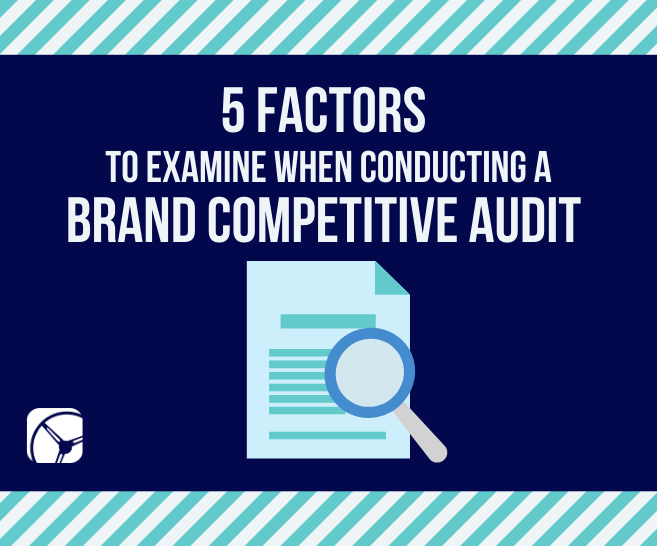Trying to outperform your competition? In order to do just that, companies should conduct competitive audits to position themselves ahead of competitors.
Competitive assessments apply to both new and well-established businesses. The more you know about your competition with any business, the easier it is to pinpoint what you should benchmark and what you should avoid.
Our market research company considers these five critical components when conducting a brand competitive audit for our clients.

1. Brand Voice and Messaging
Whether you notice it or not, every company has a voice. This voice has its own distinct tone, style, and personality. Moreover, it’s important for its own unique reasons.
You can either refine your brand's voice to make it more appealing to your target audience. Or you can ignore it.
When you ignore your brand's voice, it's like ignoring the voice in your head telling you to keep your hand off a hot stove.
Fortunately, tuning into your brand's voice isn't that difficult, thanks to brand competitive audits. To recognize the brand voices of your competitors, ask yourself the following questions.
When viewing a competitor’s social media account:
- How significant is the presence of the competitor's voice?
- What social platforms does your competitor use?
- How often does the competitor make a new post?
- Does the competitor's voice come across as laid back or more professional?
When reviewing the content on a competitor’s website:
- Do most of your competitors have a professional tone?
- Does the tone project encouragement and confidence?
- Are there any grammatical errors on the competitor’s website?
💡💡 Pro tip: try to copy and paste the content from a few pages on each competitor's website into Grammarly for tone recognition.
When assessing your competitor’s tone in its radio, TV, and newspaper content:
- Does each competitor keep a serious tone?
- Is the tone humorous?
- Is the competitor’s tone professional?
During the assessment, it’s important to use keyword tools to capture valuable keyword data.
As you review competitors' content, run it through keyword analyzers. Your competitors’ top five keywords are the keywords you should focus on your brand's voice.
Once you become attuned to it, it becomes easier to make your voice sound and act more genuine. Plus, you can start using its uniqueness to gain a competitive advantage.
2. Digital Marketing Advertising and Organic Social Media Presence
To dive deep into your competitors’ digital marketing advertising and social media strategies, make sure to answer the following questions:
- What types of customer service are offered via social media and the competitor's website?
- How often does each competitor update their blog?
- Does each competitor update their product pages regularly?
- How many links are used on each page of the competitors' sites?
- How quickly does each competitor reply on social media?
With answers to these questions, you can alter your digital marketing advertising by enhancing your strategy to rise above your competitors.
3. Pricing of Products and Services
Offering competitive pricing is one of the most effective ways to position your brand ahead of competitors.
To examine your competitors' pricing strategies, conduct research that allows you to answer the following questions:
- Does the competitor offer a higher or lower price than your brand?
- Are there multiple versions available at different price levels?
- What features are offered with each price?
With detailed answers to each question, you can then determine how to approach your own brand's pricing strategies.
The three main pricing options:
- Higher than the competitor's price
- Lower than the competitor’s price
- Equal to the competitor’s price
If you plan to set your pricing higher, you'll need to consider your product or service’s uniqueness, performance level, and the benefit to the customer.
⬆️⬆️ If you're going to set the price higher, it has to be justified.
⬇️⬇️ If you want to set the price lower, you'll seek to take away some of your competitors' customers, so it's essential to ensure you have the resources to accommodate a growing customer base.
For newer businesses and those that are downsizing, it’s best to stick to equivalent pricing.
Equivalent pricing is designed to keep your product or service’s price at the same rate as your competitor.
With equivalent pricing, the product features are highlighted because pricing no longer becomes a deciding factor for the customer.
4. Customer Reviews
This part is straightforward. All you have to do is read through reviews of your competitors, jot down the strengths and weaknesses highlighted in the reviews.
When you know your competitors' weaknesses, then you can use it to strengthen your brand.
5. Efficiency of Product Delivery
No matter the industry your brand operates in; your customers prioritize convenience.
And this is why you must look at your competitors' efficiency of product delivery from both a brand and the customer's point of view.
Consider the following questions:
- Does each of your competitors provide timely service?
- Is expedited delivery an option? If not, can you provide it?
- Can you provide the same delivery service and options? If not, tweak your delivery options.
- Did shipping or delivery time seem to be an issue for prior and existing customers? If so, how can you avoid this issue?
Contact Our Competitive Assessment Research Firm
Drive Research is a national market research company located in Upstate New York. We work with companies across the country to assist with competitive audits and research needs.
Questions about an upcoming project? Contact us below.
- Message us on our website
- Email us at [email protected]
- Call us at 888-725-DATA
- Text us at 315-303-2040

Emily Carroll
A SUNY Cortland graduate, Emily has taken her passion for social and content marketing to Drive Research as the Marketing Coordinator. She has earned certificates for both Google Analytics and Google AdWords.
Learn more about Emily, here.

